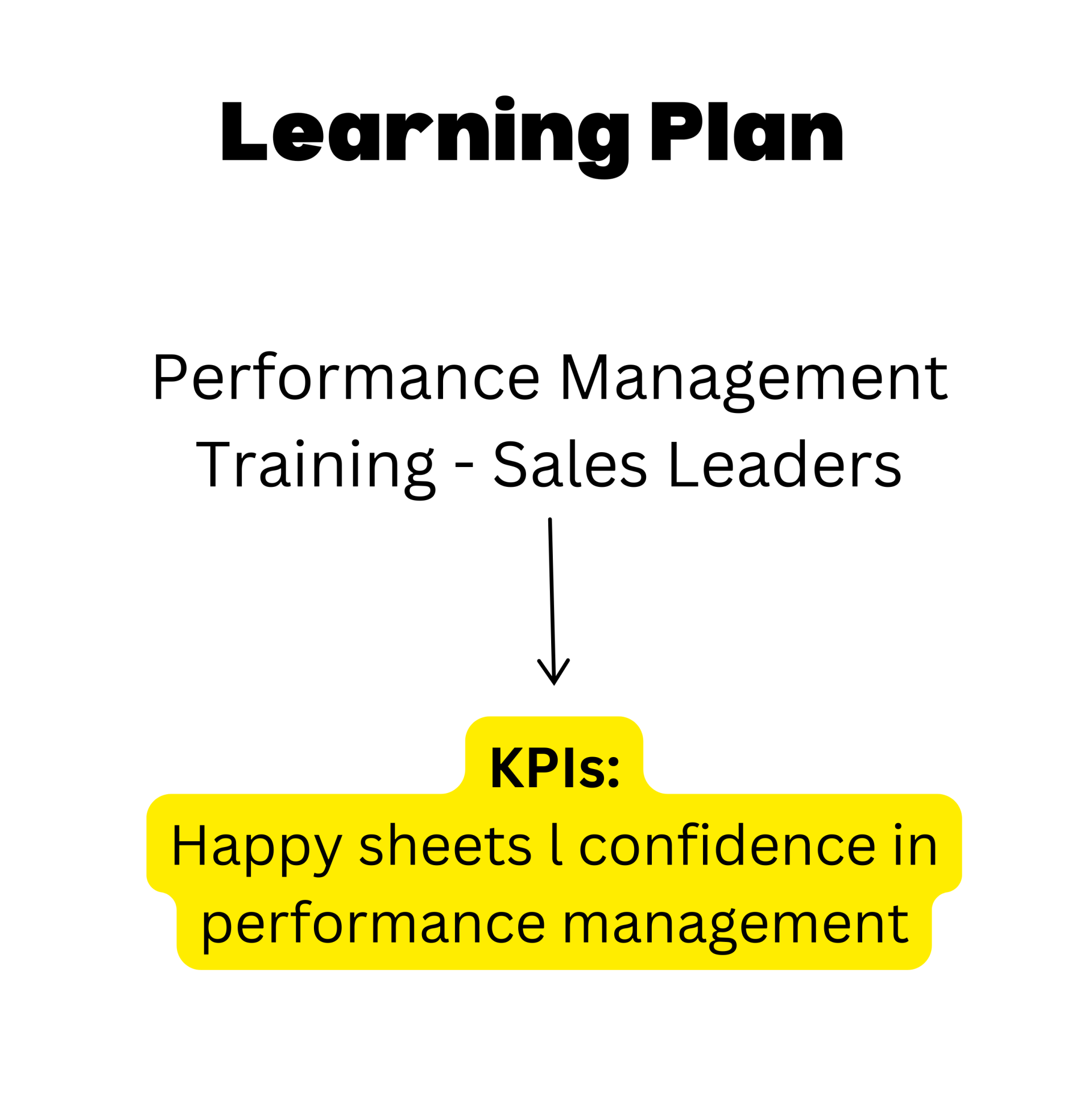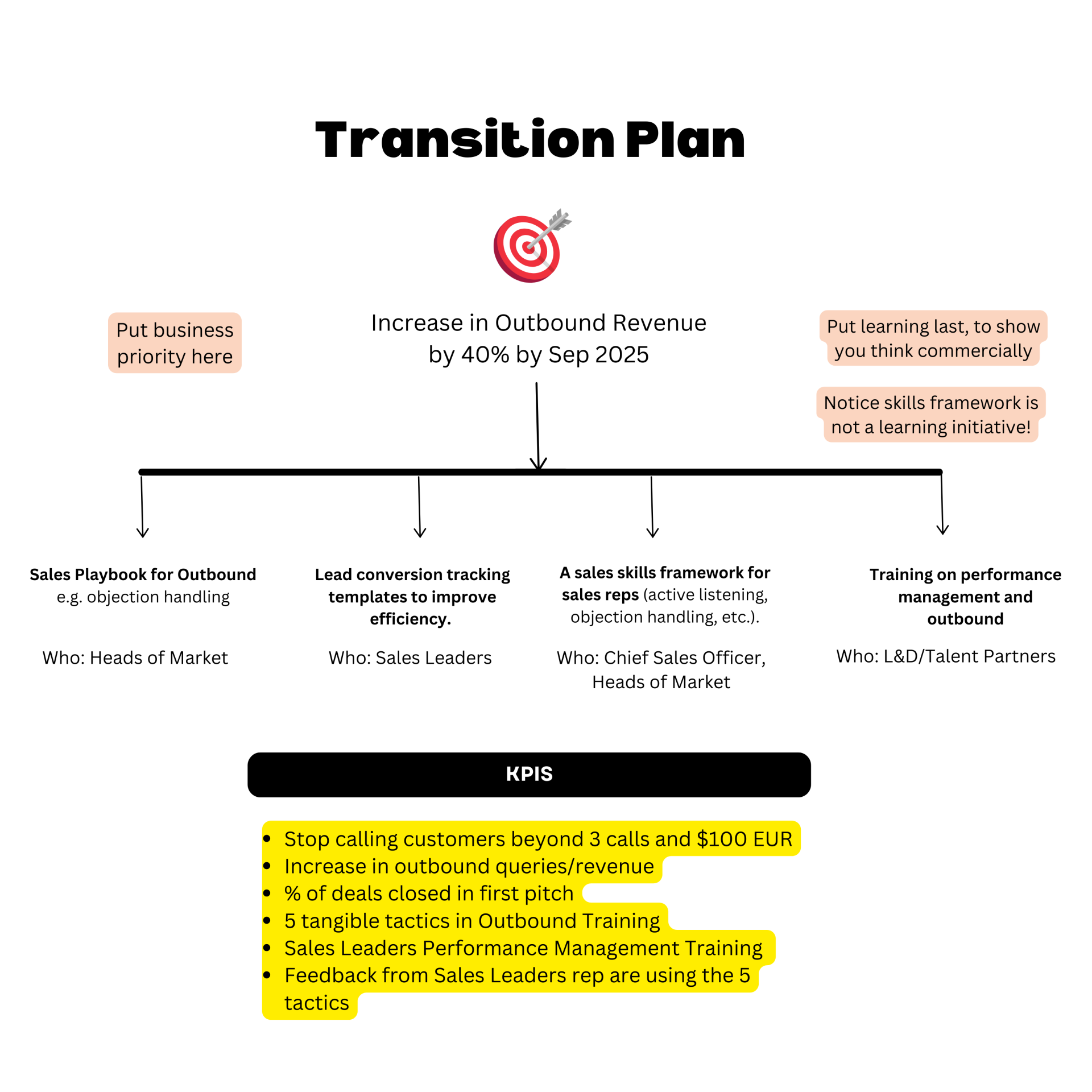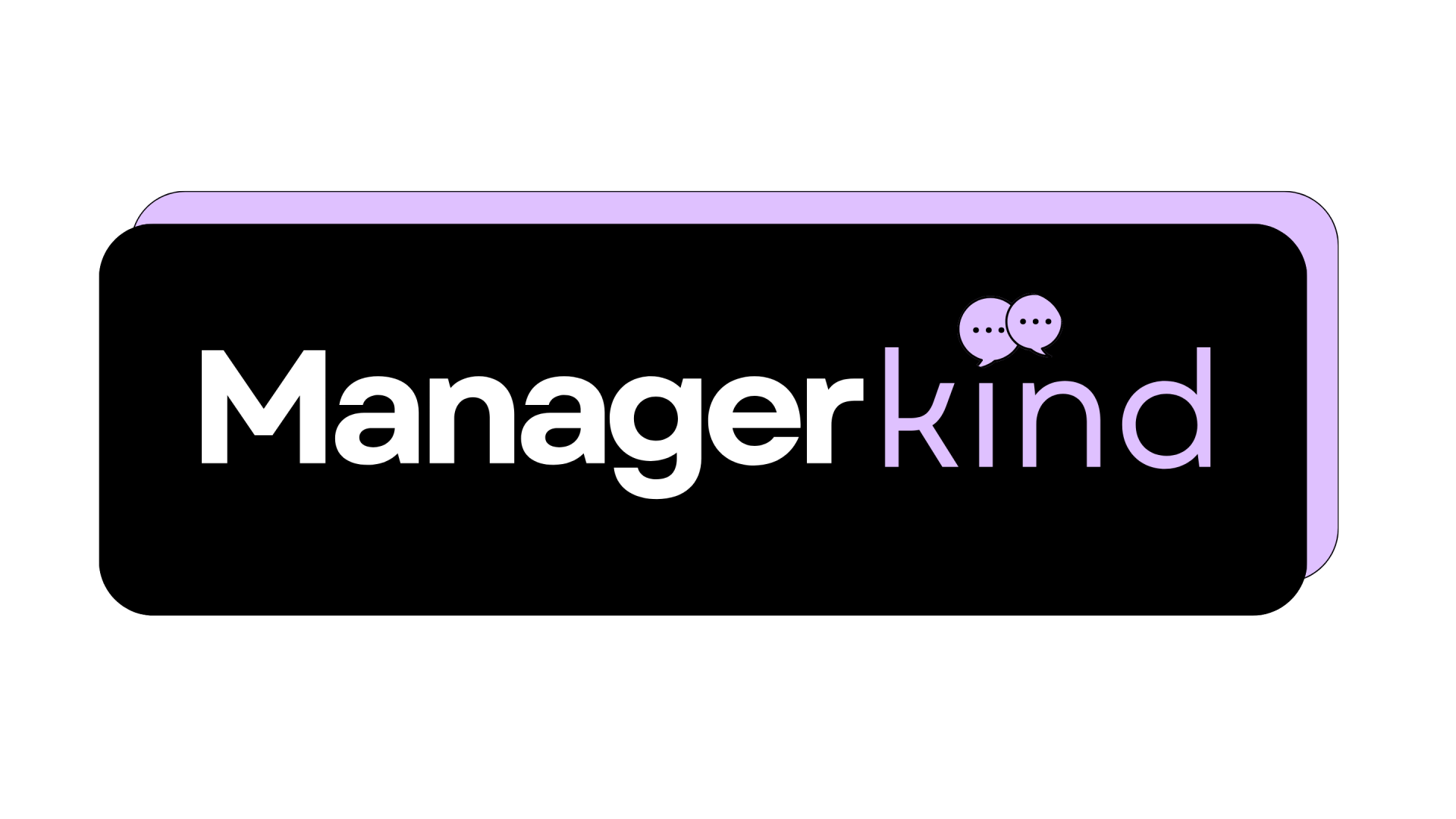Stop creating learning plans - instead create business plans!
For too long, Learning & Development (L&D) has been confined to crafting training plans; answering requests to “run a workshop” or “train our managers.” But business leaders don’t think in training plans; they think in business plans.
Here's how you can switch to a business plan.
Here's how you can switch to a business plan.
What is a business plan?
Where a learning plan is usually focused on training alone, the business plan contains other solutions to a business problem such as tech, process improvements, where the learning improvement is just one part of a broader solution.
The business plan has improvements in business KPIs as the intended goal.
Here's a real case study from January 2025.
Case study
ShipFast (name anonymised) is a fast growing company based in Europe, with 400 employees and offices. They allow e-commerce businesses to book shipping for their products faster by connecting with multiple logistics companies in one platform from DHL, to UPS and Fedex. Think of Uber but for shipping!
🧊 The Surface-Level Request:
“We need to train our Sales Leaders on performance management so our Sales Reps can generate more leads and sales.”
🏔 What’s Underneath:
Instead of just delivering training, I meet with the Chief Sales Officer and Sales Leaders and discover:
1️⃣ The business is shifting to outbound sales to drive revenue from 10% outbound to 50%! (tip: see definition below)
2️⃣ Sales Reps don't have strong outbound skills and weren't securing enough sales
3️⃣ Sales Reps performance is only measured on % of their sales quotas they secure
4️⃣ There is a need for soft skills or behavioural traits of selling e.g. active listening
5️⃣ So Leaders struggle with performance conversations beyond quotas such as how to speak to a customer, actively listen to their needs, pitching, etc
The real issue?
Not performance training! There is no structured training or transition plan to move to Outbound.
Sidebar- Business concept explained:
💡Inbound vs Outbound
The difference is who initiates communication - customer or company.
Inbound is where customers initiate the contact to buy or inquire about your product. The queries are coming "in" to your business hence inbound. Outbound is where your sales reps initiate the contact and call "out", like cold calling, emailing or events. Outbound can be harder as sales reps have to convince someone to take a call or email or come to your stall.
💬 You can say "we currently generate 10% outbound sales and 90% inbound sales revenue, and want to increase outbound to 50%"
Later, see useful graphic on this site.
The Business Plan approach
Instead of just running training (a learning plan):

You build a Business or "Transition Plan" that supports business growth.
Example 4 point Business Plan

It includes:
✔️ Business KPIs and metrics
✔️ Beyond learning to include Sales Playbook & Templates
✔️ A skills framework for outbound sales (active listening, etc.).
✔️ Training on performance management and outbound (e.g. active listening, handling tough customers) - learning is just one part!
As learning is just one part, I often call these one point learning plan vs a 4 point business plan. You can also call it a "transition" plan to transition teams towards a change.
Here's a cool trick, even if your company doesn't ask for business plans, you can talk and present in this way! Your C-leaders will start to see you more commercially.
Key questions to ask an L&D
Training is not always the answer— you know this.
So the real test is how well do you know the business challenges different departments are facing? In this case the sales team.
Here a 3 general questions:
Here are 3 sales specific questions/terms you can learn:
Draw a simple little diagram for yourself.
Let’s stop crafting learning plans—and start designing business plans and strategies where learning is just one piece of the puzzle.
In order to design the above plan, you would need to liaise with key stakeholders, you can build these proactively don't wait until you get the request. You need to talk the language and have some working knowledge of sales.
So the real test is how well do you know the business challenges different departments are facing? In this case the sales team.
Here a 3 general questions:
1️⃣ What’s the actual business problem? (Not just the learning gap)
2️⃣ What other solutions—besides training—could solve it?
3️⃣ How does the business measure success for that business area?
Here are 3 sales specific questions/terms you can learn:
1. What is a "sales cycle" and what is my companies sales cycle
2. What is inbound vs outbound revenue and what is my company currently focusing on?
3. What different customer segments do the salesWhat could be the impacts if anything shifts above?
Draw a simple little diagram for yourself.
Let’s stop crafting learning plans—and start designing business plans and strategies where learning is just one piece of the puzzle.
Sign up to the L&D Means Business Community!
Learn business acumen, get resources, tools, tips and access to events!
Our team is always ready to help you
— Companies
Our partnerships
To offer top quality training we work with a number of innovative organizations that offer cutting edge, high quality training and professional development opportunities to individuals.






— What they think


